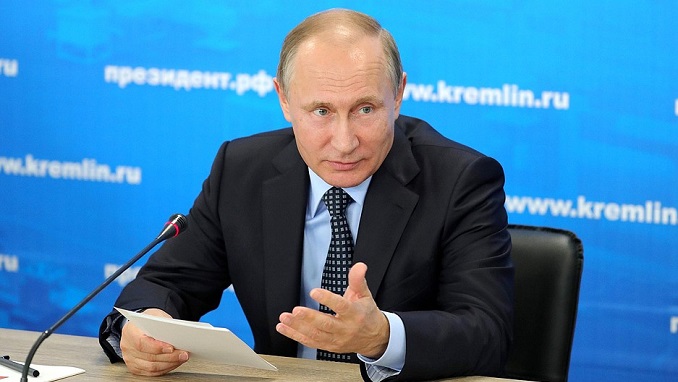Russian President Vladimir Putin delivered his State of the Nation address Thursday, announcing the country now has a nuclear capability unlike anything in the world.
Putin that Russia would not need new weapons if its legitimate concerns had not been ignored by Washington and its allies. “Nobody wanted to talk with us on the core of the problem. Nobody listened to us. Now you listen,” he said.
According to Bloomberg, the Russian president’s announcement mixed some well-known technological advances with a few genuine revelations. But the technical specifics are perhaps less important than the message Putin sent to the U.S.: The cost of a conventional war remains far too high.
Putin’s big point was that Russian nukes have a lot of ways to penetrate U.S. missile shields, and will have many more before too long. The nuclear-capable hardware the Russian leader advertised with computer-generated videos can be ranged from the well-known and combat-ready to the iffy.
The RS-28 Sarmat intercontinental ballistic missile probably has the ability to bypass existing U.S. anti-missile defense systems — if only because they aren’t dense enough. The Avangard hypersonic boost glide vehicle, known to experts as Object 4202, is designed to avoid shields by flying in the upper reaches of earth’s atmosphere at a supersonic speed. It can fly at Mach 20, “moving toward the target like a meteorite, a burning ball, a ball of fire,” Putin marveled. Both are ready or near ready to deploy.
Further behind is the underwater drone Putin described, known as the Status 6 strategic nuclear torpedo, which would be much harder to track than submarines. It’s not news to Americans, though: It even got a mention in the recently published U.S. Nuclear Posture Review.
Putin unveiled three other weapons for the first time. The Kinzhal (Dagger), an air-launched missile constructively similar to the ground-launched Iskander; a ground-based laser weapon; and a low-flying, nuclear-powered cruise missile that can supposedly dodge both hills and missile defense systems. That inspired some disbelief — a nuclear engine is heavy and difficult to fit in a missile. Of the three, only the Kinzhal appears to be close to being commissioned.
According to Michael Kofman, a military analyst who is a fellow at the Kennan Institute in Washington, D.C., Putin failed to mention two new weapons that had earlier created some buzz in the expert community: the Tsirkon anti-ship supersonic missile and the RS-26 Rubezh ICBM.
“This is the concerning story: Russian weapons will disappear from the news for a long time which suggests that they’re making progress,” Kofman says.












